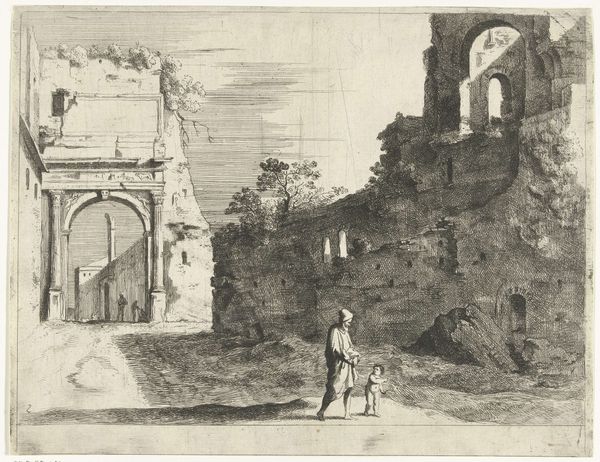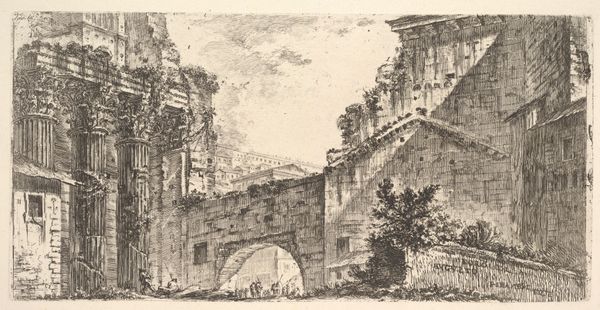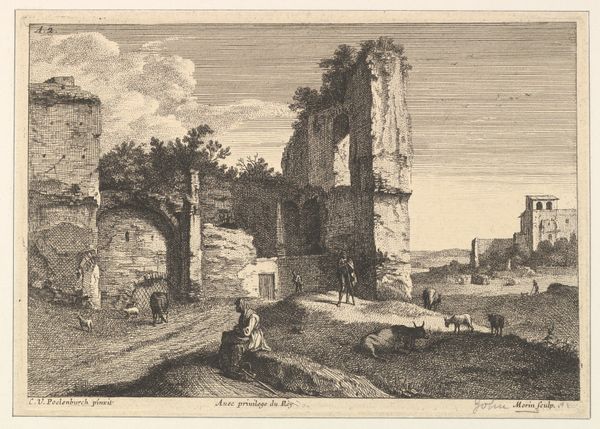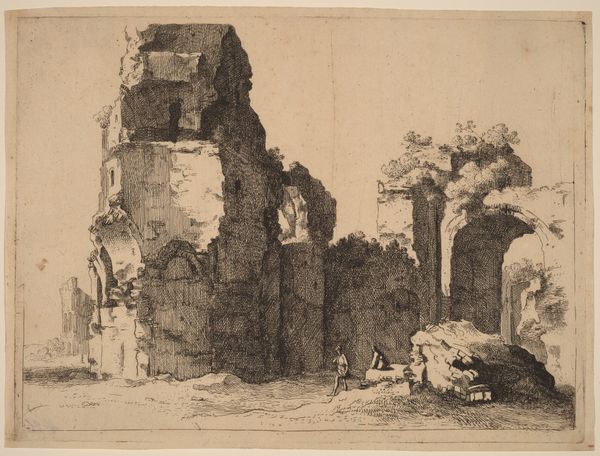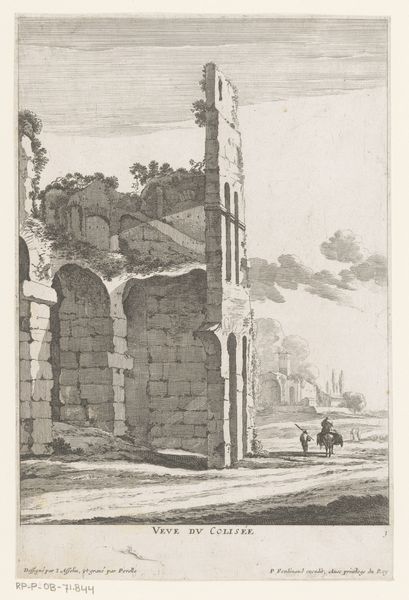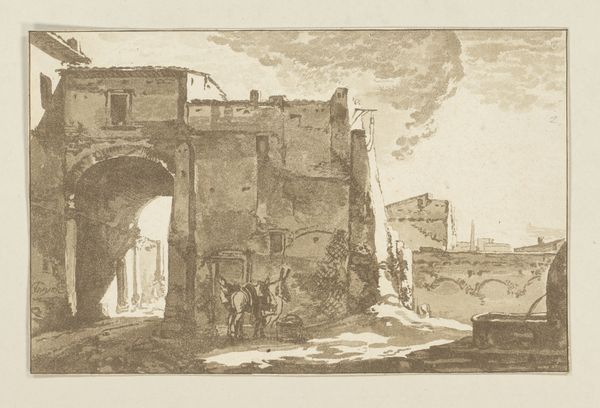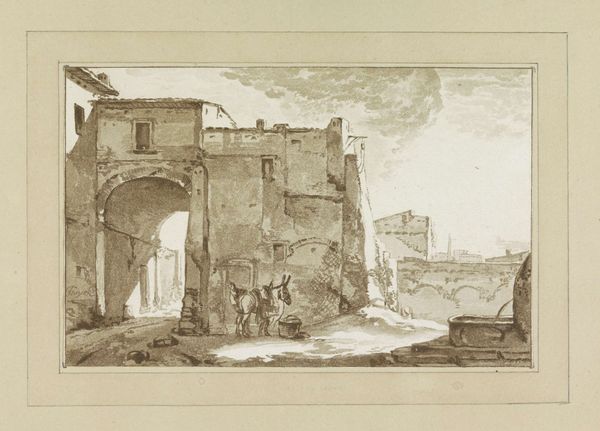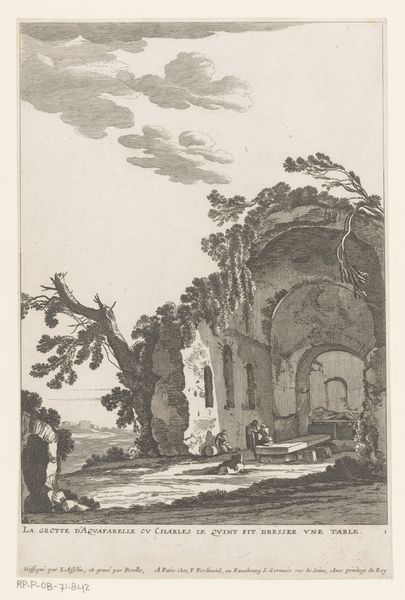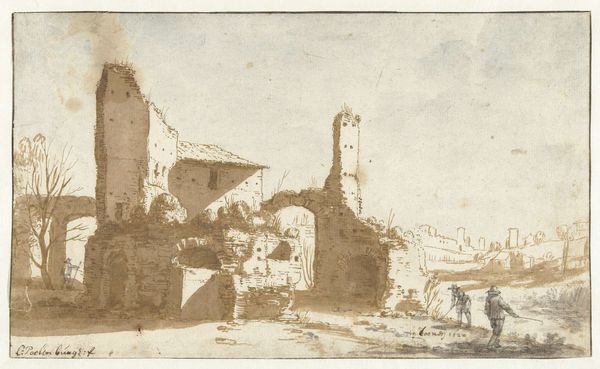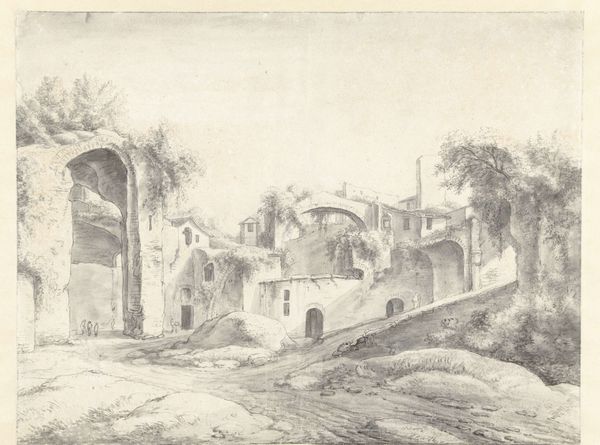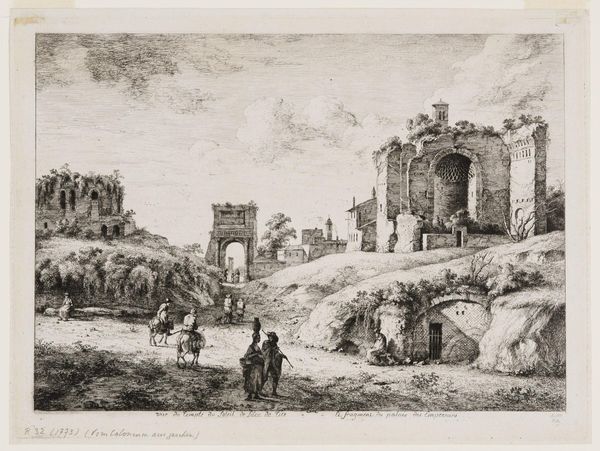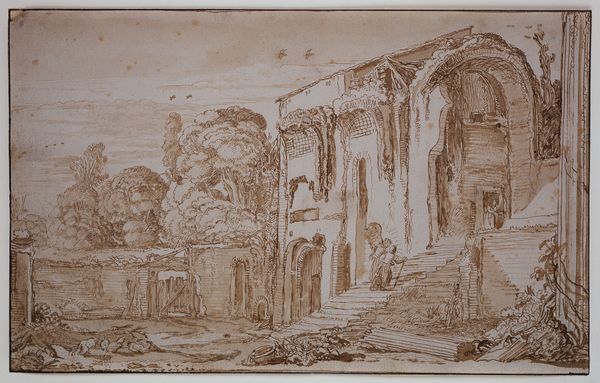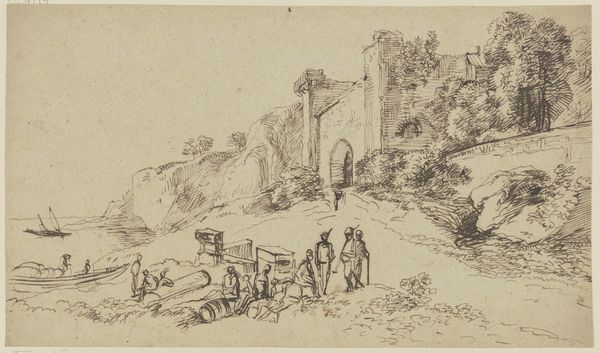
print, etching
#
baroque
# print
#
etching
#
landscape
#
cityscape
Dimensions: 182 mm (height) x 249 mm (width) (bladmaal)
Curator: Jan Gerritsz van Bronchorst’s etching, “Titusbuen,” likely made sometime between 1603 and 1661, invites us to contemplate the ruins of a grand, perhaps idealized, cityscape. The work is held here at the SMK. Editor: It has a somewhat melancholic feel, doesn't it? The stark contrast in shading really emphasizes the crumbling structures. I see two figures in the foreground – are they simply passersby, or perhaps symbols of humanity's fleeting presence against the backdrop of historical decay? Curator: It's insightful of you to point that out. The architecture takes center stage here, a play between light and shadow. The actual Titus Arch in Rome was a monument to Roman imperial power. To show it decaying serves the question on whose power benefits? Editor: Absolutely, it could be a critique of power, a commentary on the impermanence of empires. What was Van Bronchorst's intention? The etching emphasizes the picturesque decay—rather romantic in a way, considering Baroque art’s tendencies toward drama. Curator: Considering its creation period, after the reformation and as other European powers wrestled for position, Van Bronchorst's exploration serves as a critique on religion's grip and Roman power. The focus on landscape also makes this about natural forces and its toll over human achievements. Editor: You’re right, its about a shift in what is prioritized as 'powerful.' Did the process of etching itself - a medium known for detail, allow him to engage critically with concepts of memory and time? Did it invite a more inclusive audience, outside wealthy patrons to participate in interpreting shifting views and ideology? Curator: Very likely. Prints allowed broader audiences to have access to art and ideas. Displaying architectural decay subtly questioned power structures, opening dialogues in public and academic spheres. Editor: Exactly, democratizing art. Considering those dialogues, Bronchorst doesn’t portray Titus’ arch triumphantly; rather it questions triumphant moments. It makes us remember history isn't made from conquerors' viewpoints but about understanding it from all sides and impacts. Curator: The decaying monuments certainly serve as silent critiques, resonating with broader themes in Early Modern Europe's ever-changing power paradigms. Editor: Indeed, "Titusbuen" gives more than a glimpse into physical spaces and structures. It opens up broader views to understand changes in European society from new vantage points.
Comments
No comments
Be the first to comment and join the conversation on the ultimate creative platform.
